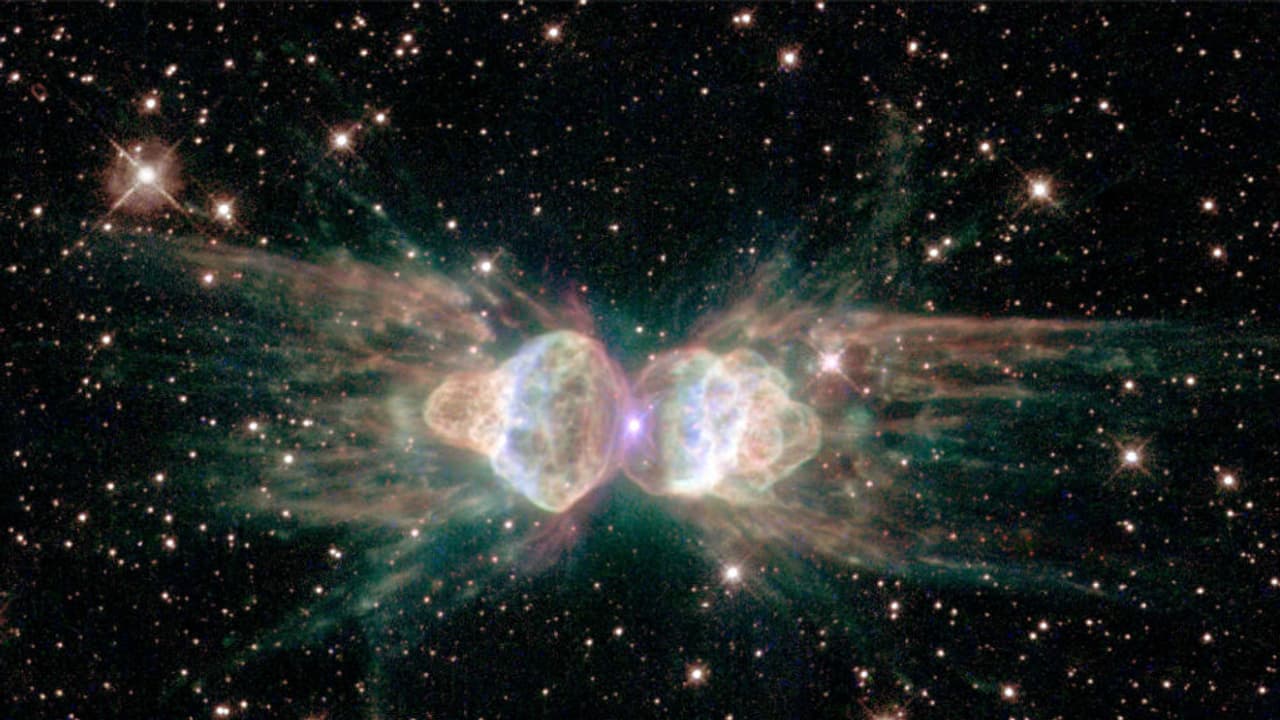Astronomers at the University of Warwick have detected ultraviolet traces of carbon in the superheated atmosphere of WD 0525+526, a white dwarf located just 130 light-years from Earth.
NASA’s Hubble Space Telescope has unveiled compelling evidence of a dramatic cosmic collision — a rare, fiery fusion of two stars that left behind a ghostly remnant as an ordinary white dwarf. Astronomers at the University of Warwick have detected ultraviolet traces of carbon in the superheated atmosphere of WD 0525+526, a white dwarf located just 130 light-years from Earth. This seemingly unremarkable star has now been identified as the aftermath of a violent stellar merger, thanks to Hubble’s ultraviolet gaze — a capability unmatched by ground-based telescopes that are blind to such spectral fingerprints.
“In optical light (the kind of light we see with our eyes), WD 0525+526 looks like a heavy but otherwise ordinary white dwarf,” explained Dr. Snehalata Sahu, lead author and Research Fellow at the University of Warwick. “However, through ultraviolet observations obtained with Hubble, we were able to detect faint carbon signatures that were not visible to optical telescopes.”
White dwarfs are the dense, smoldering remnants of sun-like stars that have exhausted their fuel, typically composed of a carbon-oxygen core cloaked in thick layers of hydrogen and helium. However, WD 0525+526 defies this cosmic blueprint. Weighing in at 20% more than our Sun, it belongs to an enigmatic class of ultra-massive white dwarfs whose origins have long eluded astronomers.
What makes this discovery truly extraordinary is the unexpected presence of carbon in the star’s atmosphere — a smoking gun for a cataclysmic binary star merger.
“Finding small amounts of carbon in the atmosphere is a telltale sign that this massive white dwarf is likely to be the remnant of a merger between two stars colliding,” Sahu elaborated. “It also tells us there may be many more merger remnants like this masquerading as common pure-hydrogen atmosphere white dwarfs. Only ultraviolet observations would be able to reveal them to us.”
Typically, carbon remains hidden beneath thick hydrogen and helium envelopes in white dwarfs. But during a merger, those outer layers are violently stripped away or incinerated, leaving behind a skeletal star with a wafer-thin atmospheric veil — through which carbon can now escape and shine.
Co-lead author Antoine Bedard, Warwick Prize Fellow in the Astronomy and Astrophysics group, noted the extraordinary thinness of WD 0525+526’s hydrogen and helium layers — ten billion times thinner than in typical white dwarfs.
“We think these layers were stripped away in the merger, and this is what now allows carbon to appear on the surface.”
Yet even among such merger remnants, WD 0525+526 is an anomaly. Its carbon levels are astonishingly low — about 100,000 times less than in other known post-merger white dwarfs — and it burns at a scorching temperature nearly four times hotter than the Sun. These factors indicate that the star is still in its earliest post-merger evolutionary phase, offering scientists an unprecedented look into the immediate aftermath of such a cosmic cataclysm.
What puzzled astronomers further was the mechanism by which carbon reached the surface. The star’s blistering temperature should prevent convection — the usual means for elements to rise — from occurring. Instead, researchers uncovered evidence of a subtler and previously unseen process in white dwarfs known as semi-convection, a gentle mixing phenomenon that slowly nudges carbon into the hydrogen-rich atmosphere.
“Finding clear evidence of mergers in individual white dwarfs is rare,” said Professor Boris Gänsicke, who acquired the Hubble data. “But ultraviolet spectroscopy gives us the ability to detect these signs early, when the carbon is still invisible at optical wavelengths.”
Because Earth’s atmosphere blocks ultraviolet light, space-based observatories like Hubble are indispensable for such discoveries. Gänsicke emphasized the importance of preparing for the post-Hubble era:
“Hubble just turned 35 years old, and while still going strong, it is very important that we start planning for a new space telescope that will eventually replace it.”
